In the realm of garden design, few styles evoke the same sense of timeless charm and natural elegance as the beloved cottage style. There is something truly nostalgic about those classic, English cottage gardens. But achieving that picture-perfect cottage aesthetic isn’t just about scattering flowers haphazardly or letting nature take its course. It requires a thoughtful approach, a keen eye for detail, and a touch of whimsy.
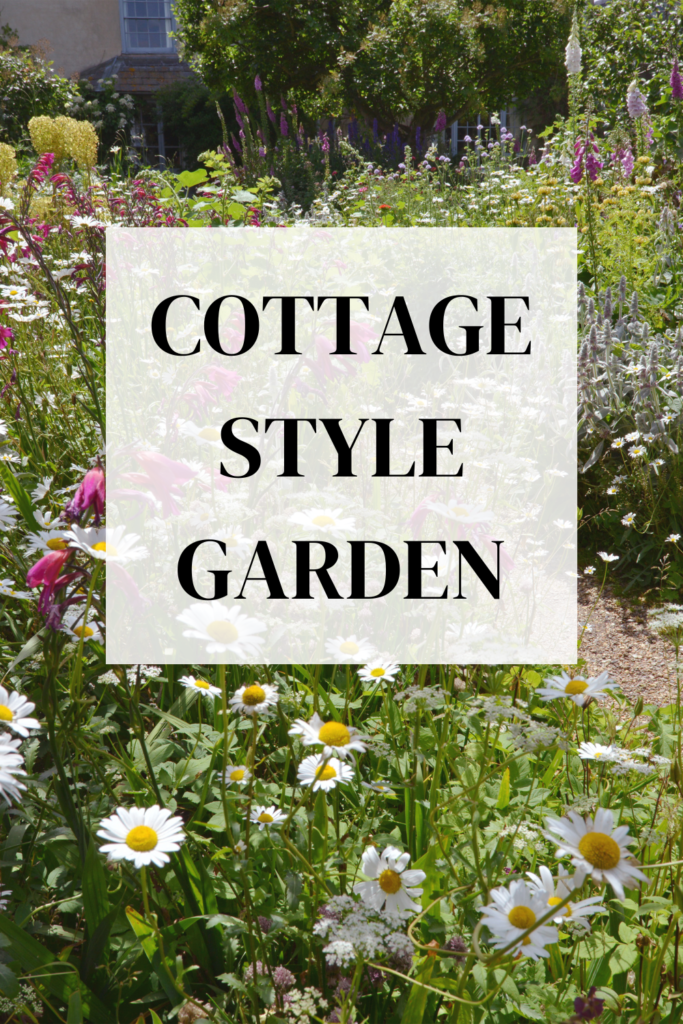
In this guide, we’ll unveil thirteen secrets to help you transform your outdoor space into a haven of cottage-style beauty. From selecting the right plants to incorporating quaint touches and creating a sense of whimsical romance, we’ll delve into the essence of what makes a cottage style garden truly magical.
Secrets to Designing a Cottage Style Garden
Let’s explore the 13 secrets to achieve the cottage style garden of your dreams.
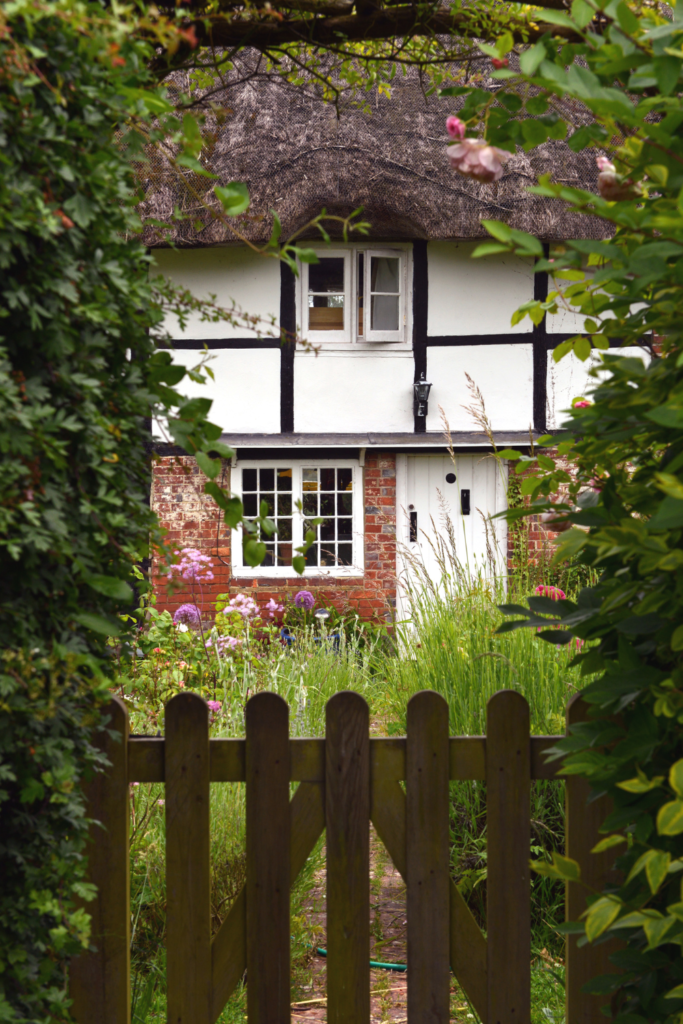
1. Create Curved Borders
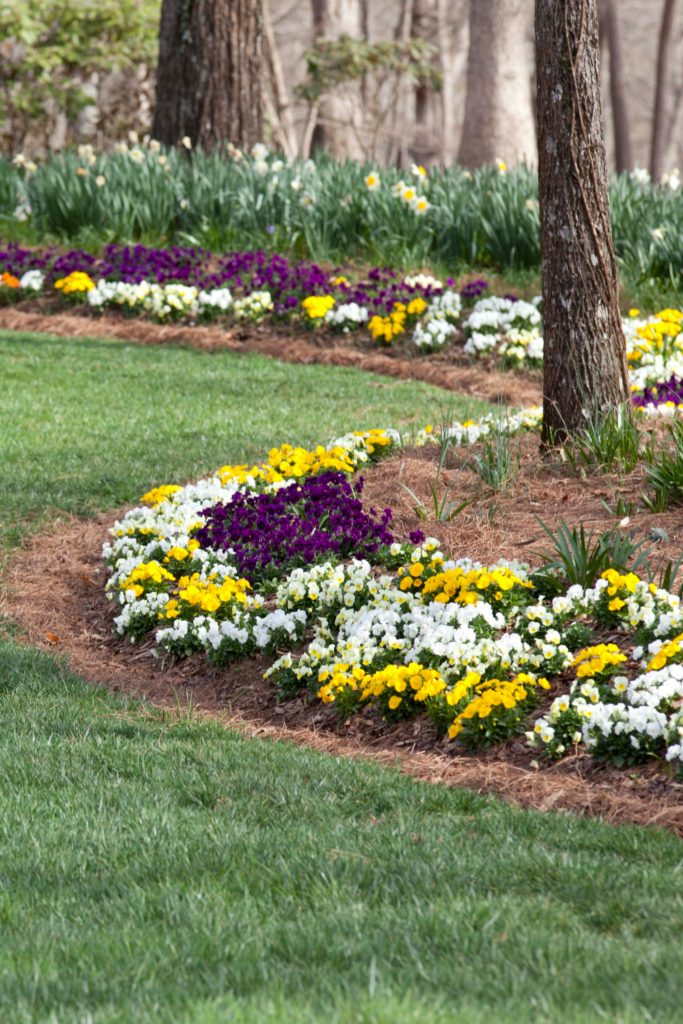
Avoid rigid lines and create soft, curved borders for a more organic and inviting feel.
When designing a garden, it can be tempting to go for all straight lines. In the cottage style garden, however, you want to do the opposite.
Waves and curves create interest, as well as a relaxed feeling in the garden space. Not making your design too rigid is one of the things that will set your garden apart and give it a true cottage-like feeling.
2. Create Winding Paths

Playing off of the previous tip, use the same principle when creating paths in your space. Install meandering pathways using gravel, stepping stones, or brick to invite exploration and discovery.
Avoid straight pathways to create an organic and natural feeling in your garden.
This unexpected approach encourages relaxing wanderings among your fragrant cottage-style blooms. Exactly what you want!
3. Embrace Informality
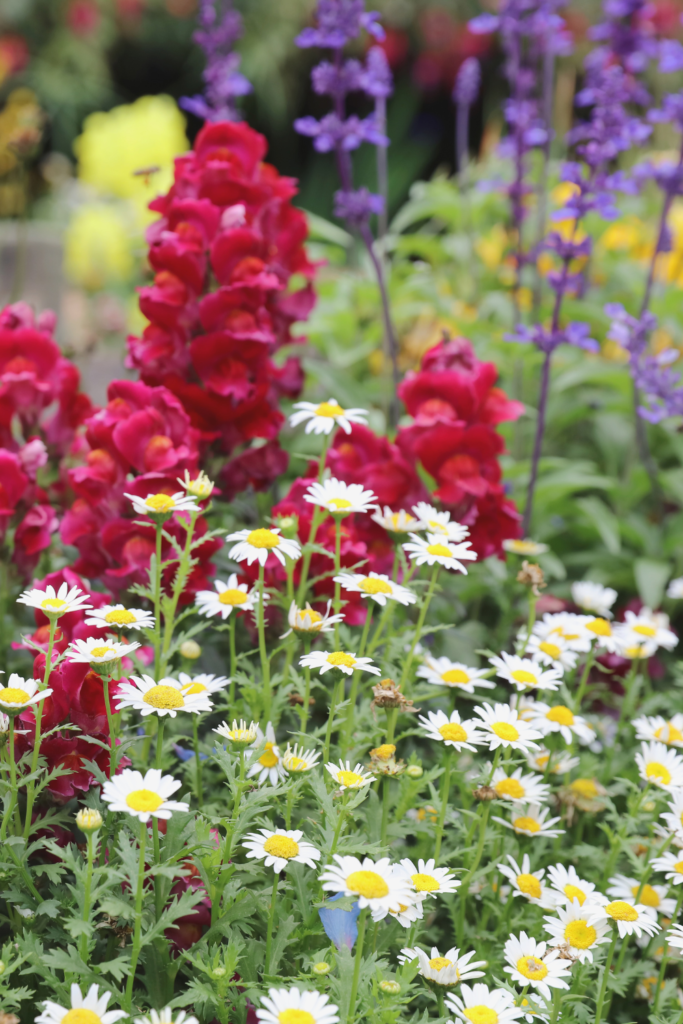
Cottage gardens have a relaxed, informal look, so don’t worry about perfectly manicured beds. Let plants spill over pathways and borders for a natural feel. You almost want it to feel like you’re out in a meadow, or wandering through a lush forest.
This doesn’t mean neglecting your garden. You still want to keep on top of weeding and deadheading old blooms. Just don’t worry too much about having it look perfectly polished. It’s ok for it to look a little wild.
Your goal is relaxed, whimsical, and romantic!
4. Add Vintage Accents
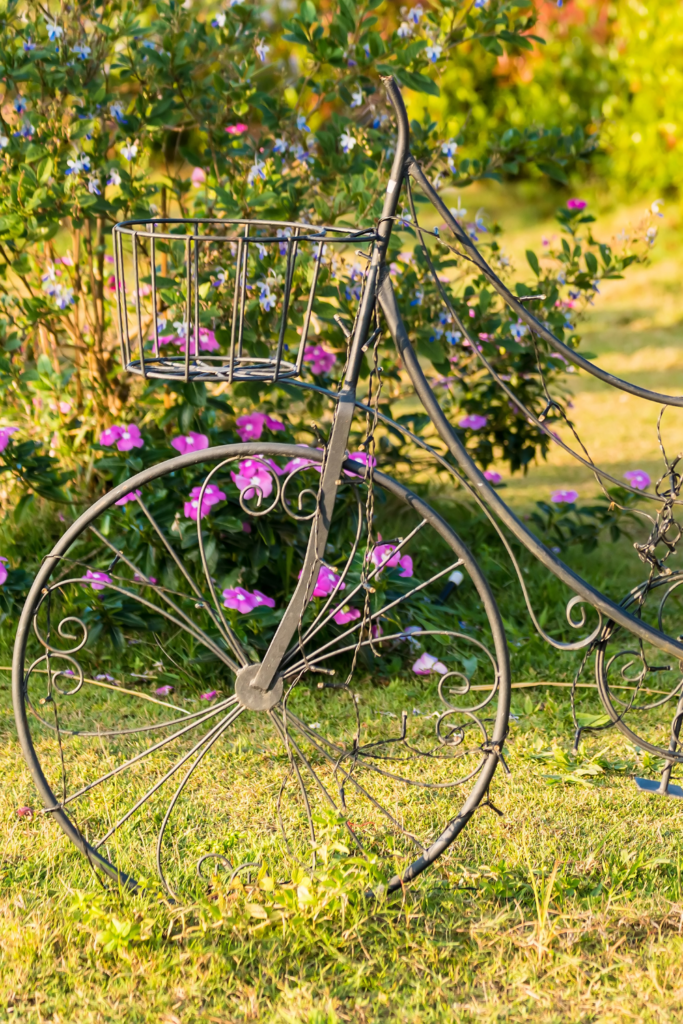
Incorporate vintage elements like wrought iron furniture, antique pots, or repurposed containers to evoke a sense of nostalgia.
This is where you can get personal and express your style. Go antique-hunting at garage sales, Facebook marketplace, or thrift stores. It’s amazing what you can find.
Maybe you even have a beautiful piece that has been passed down to you from a relative? Why not include it in your garden design to make it even more personal to you?
5. Include Fragrant Plants
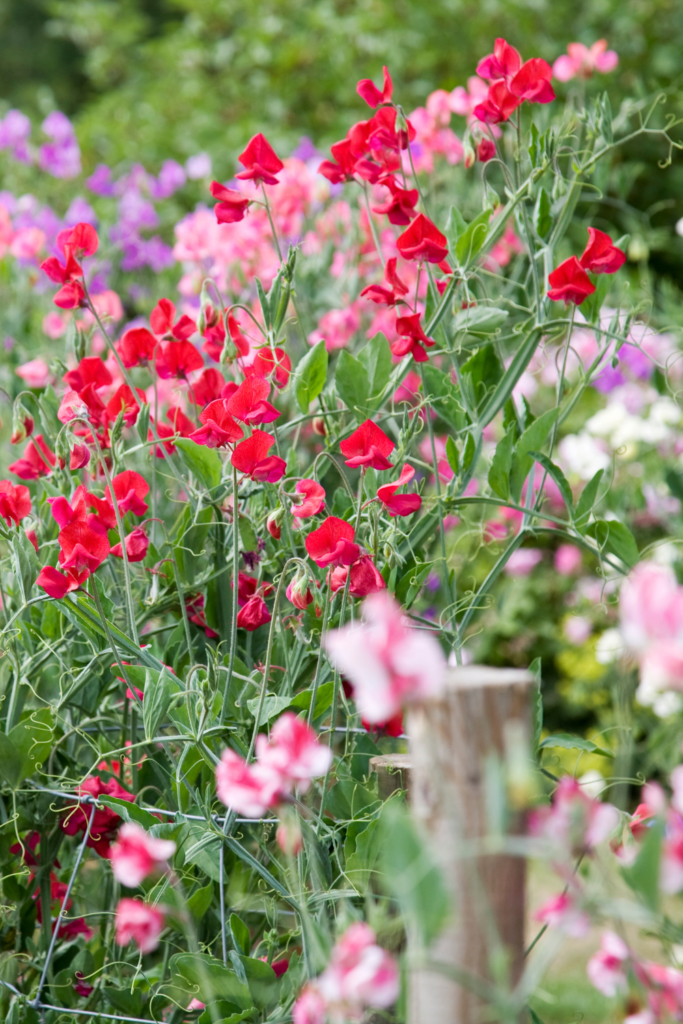
Enhance the sensory experience by incorporating fragrant blooms like roses, lavender, and jasmine.
A cottage garden is a pleasant place to hang out. One of the reasons is the fragrance of the blooms. There are so many fragrant flowers to choose from. My personal favorite is sweet peas. They are a climbing flower that smells amazing!
Fill your garden with as many fragrant blooms as you can. This will also attract beneficial pollinating insects such as butterflies and bees.
6. Maintain a Consistent Color Palette
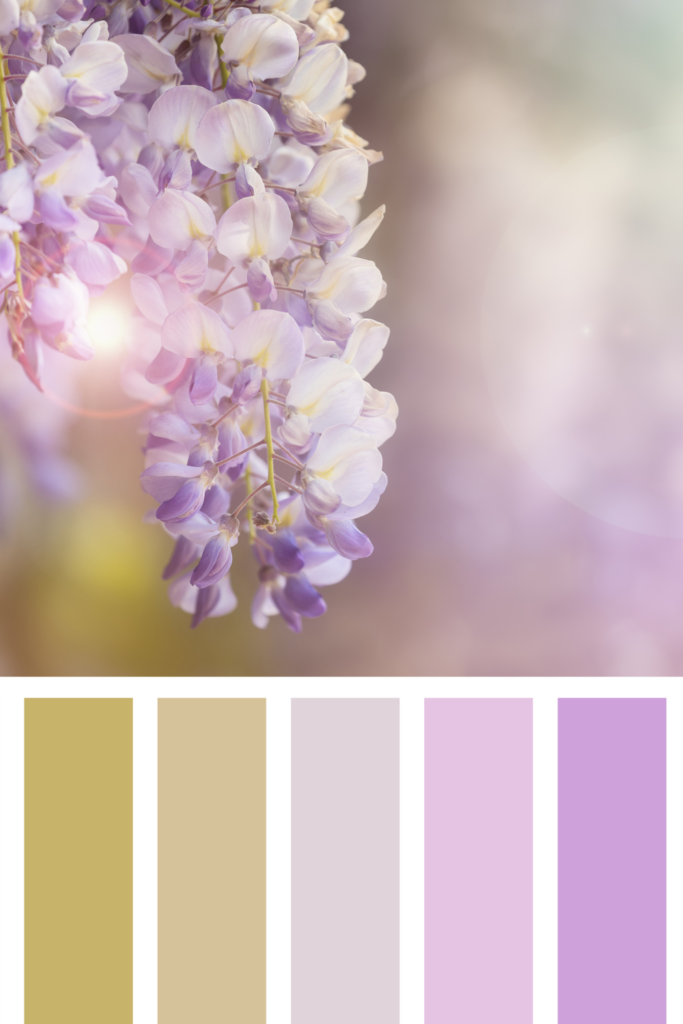
Stick to a soft, harmonious color palette with pastel shades like pink, blue, yellow, and white for a cohesive look.
The cottage garden is supposed to look whimsical, but not messy. To avoid it looking random, a color palette is a must.
Before planting your flowers, sit down and decide on what colors you want. Remember that it is your garden, so choose the colors you love. Order bulbs, perennials, and annuals in these very colors.
A great tip is to always include something white. White flowers add contrast and elegance against other colors like blues and pinks. White will never mess up your color palette.
7. Create a Cozy Seating Area
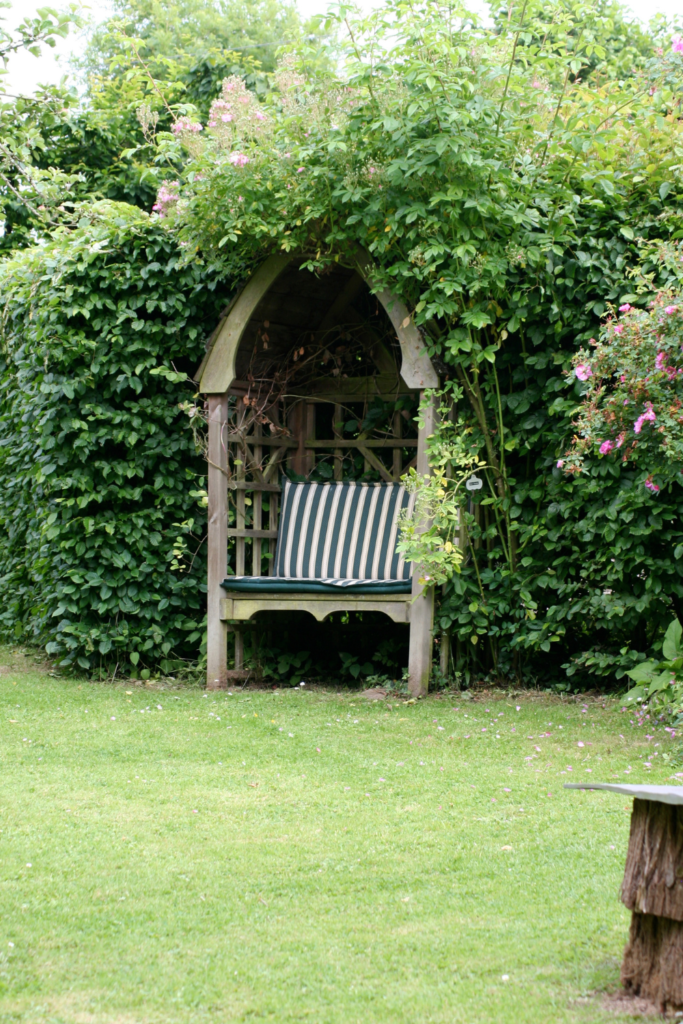
Designate a cozy seating area with vintage chairs, a bistro table, or a wooden bench nestled amidst the blooms for relaxation and enjoyment of your garden.
Not only does this look good aesthetically, but it also gives you a space to wind down, have tea with friends, or read a good book amidst your beautiful flowers.
Place the seating area in one of your favorite garden spots, so you can enjoy it to the fullest.
8. Include a Cutting Garden
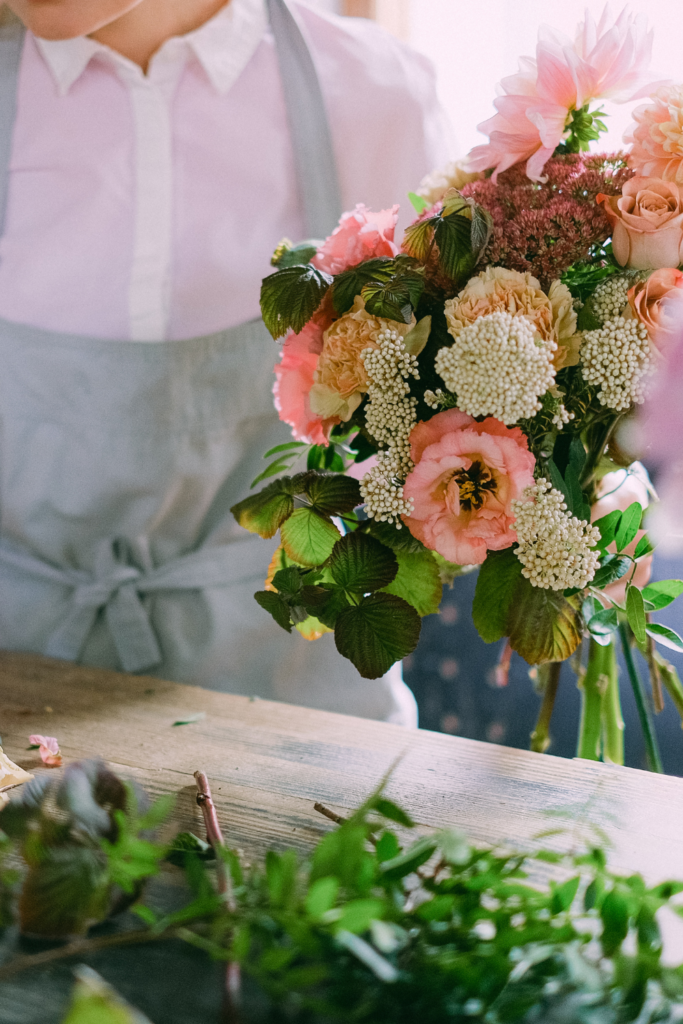
Designate a section of your garden for a cutting garden, filled with an array of flowers perfect for bouquets, allowing you to bring the beauty of your garden indoors.
I’ve personally grown a cutting garden three years in a row now, and I just love being able to make my own flower arrangements.
If you’re looking for cutting garden inspiration, the Cut Flower Garden by Floret Flower Farm is a great place to start. It gives you simple instructions to grow an abundance of cut flowers in your own backyard.
I would recommend easy-to-grow flowers like cosmos, snapdragons, and rudbeckia when you’re first starting out. If you grow an abundance of flowers for cutting you could even give some bouquets away as gifts for friends and family!
9. Layering

Create depth and visual interest by layering plants of varying heights, with taller ones at the back and shorter ones at the front.
This is super important when designing a garden. It’s all about balance. If you only have tall plants, it will look somewhat awkward, and the same goes if you only have short plants.
By placing short and full plants at the front of the border, you’re able to hide the stems of your taller flowers, allowing the beautiful blooms to receive the attention they deserve.
10. Use Climbers
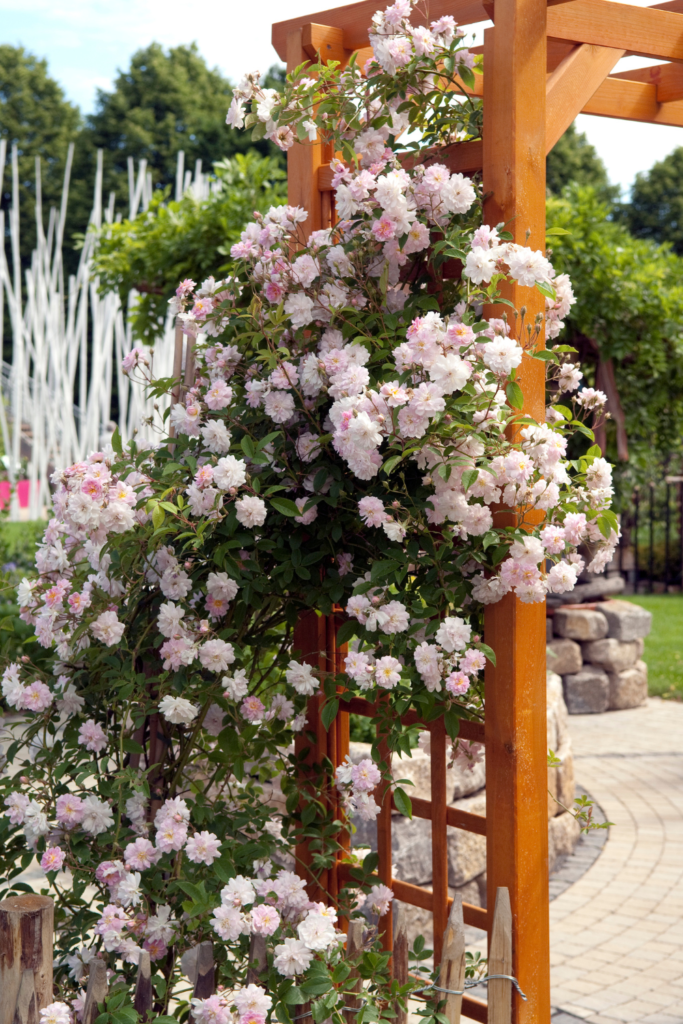
Incorporate climbing plants such as clematis, jasmine, or climbing roses to add vertical interest and soften hard structures like fences and walls.
Maybe you even want to have a garden gate where you enter your cottage garden. Why not have climbing flowers growing on this gate?
Adding climbing plants to your garden design is an easy way to add a lot of visual interest to the space.
11. Plant Flowering Trees
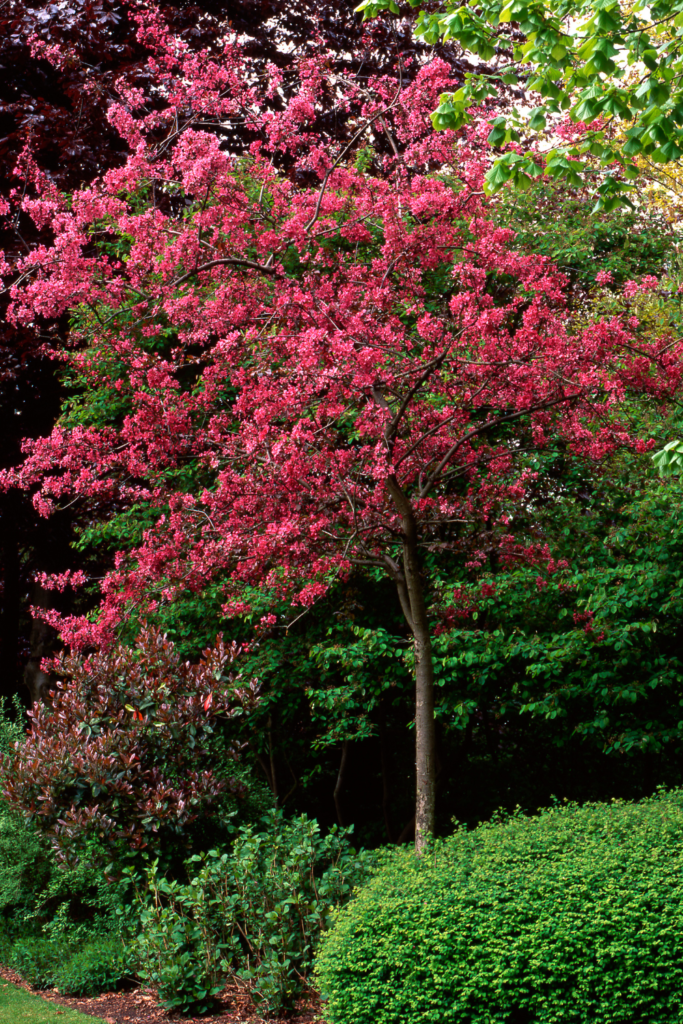
When planning your garden, don’t forget about adding trees. By having a variety of flowering trees, bushes, tall growing flowers, and shorter plants, you create a beautiful balance. Almost like an eco-system in itself!
Incorporate flowering trees such as crabapples, dogwoods, or cherry blossoms to add height, structure, and seasonal interest. Especially if you want that foresty feeling in your garden, trees are an absolute must.
Having flowering trees in your cottage garden also means you are creating a habitat for birds, which is an added bonus!
12. Choose Cottage-Style Plants
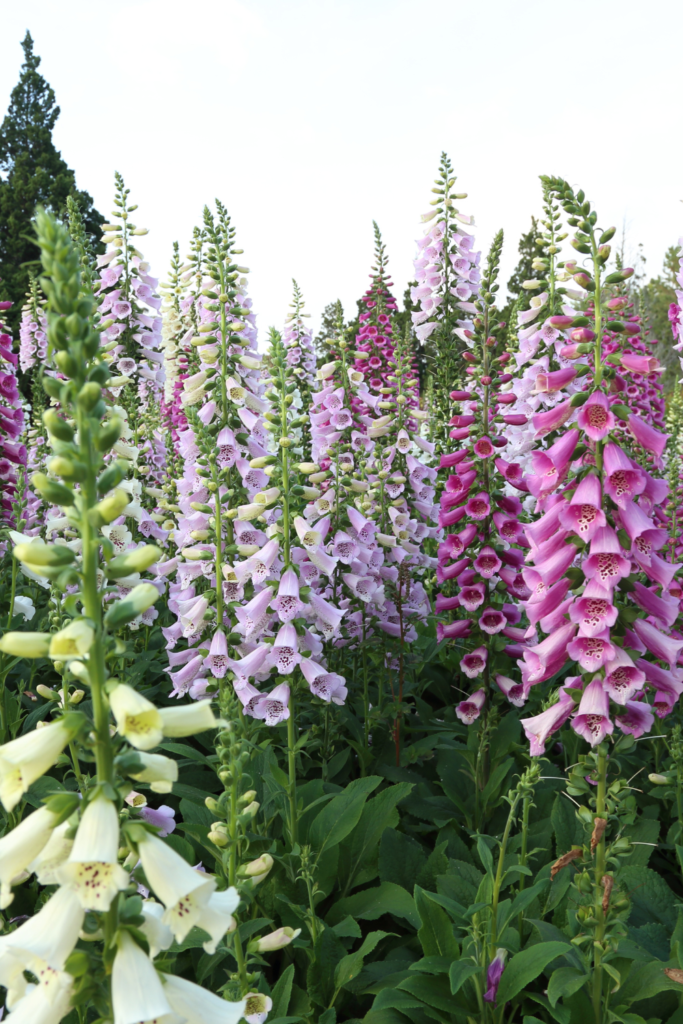
Not all plants fit into the cottage style garden, so you need to put some thought into what kind of flowers to plant. For example, you are going to want to stay away from tropical plants.
Opt for a mix of perennials, biennials, and self-seeding annuals such as roses, foxgloves, delphiniums, lavender, daisies, and poppies. Old-fashioned favorites from the English countryside are sure winners.
Check out my blog post on the best cottage garden flowers that are easy to grow here.
13. Regular Maintenance
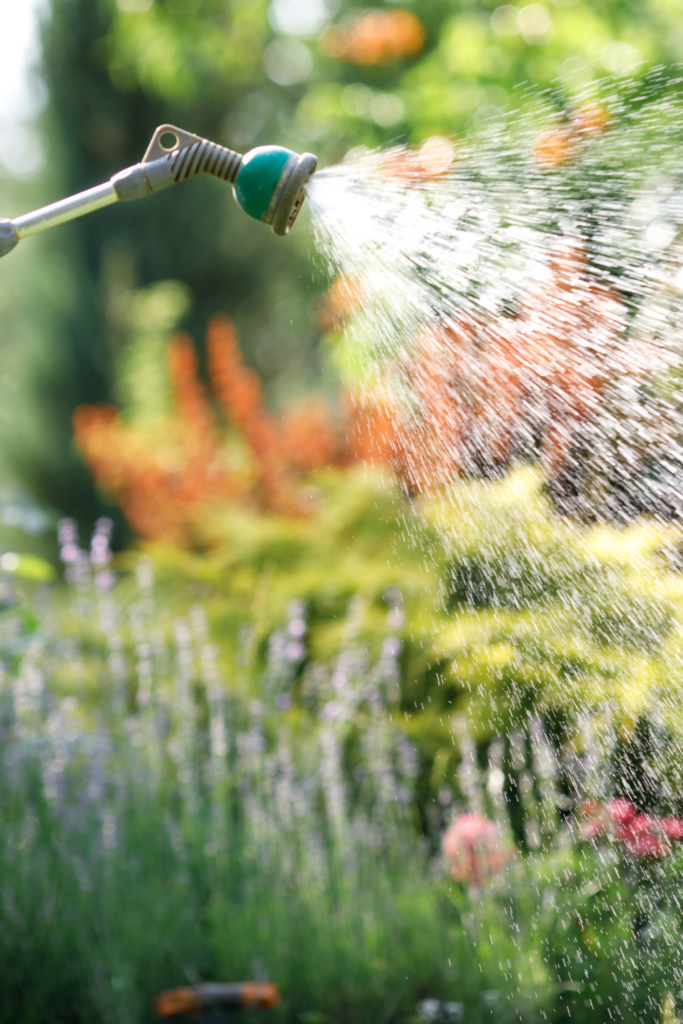
While cottage gardens have a relaxed vibe, they still require regular maintenance to keep them looking their best. Deadhead flowers, weed regularly, and divide overcrowded plants as needed. Install a hose in your garden so that it’s easy for you to water your plants as needed.
It is also important to make sure the plants receive the nutrients they need. Most plants do well in high-quality soil rich in organic matter. However, certain plants thrive in sandier soils. Always read up on how to care for the specific plants you are growing before planting. Do they prefer sun or shade? Do they need a lot of water or do they prefer to keep their roots dry?
By knowing what your specific plants need, you ensure that your garden is looking its very best. From great care comes beauty!
Conclusion
This blog post has been all about 13 secrets to achieving a cottage style garden. To sum it up, add interest and uniqueness by including vintage pieces and winding pathways. Perfection is not the goal, so don’t be afraid to make your borders curved.
Add charm and romance by planting fragrant blooms in a cohesive color palette. Stick to old-fashioned cottage garden flowers like foxgloves, roses, and columbines. Don’t forget to add visual interest with flowering trees and climbing plants on trellises. Remember that garden design is all about balance. A variety of tall and short plants is the way to go.
If you want to add a little something extra, a cutting garden is a must. A cozy seating area is also a must so that you can enjoy the space you have created!
Last, but certainly not least, take good care of your plants. Tend to them, water them, and give them what they need. You will be rewarded with a stunning, romantic and whimsical cottage style garden.
Good luck with your garden design!